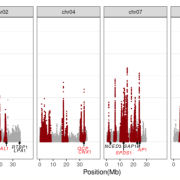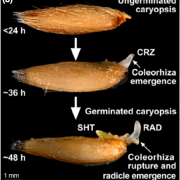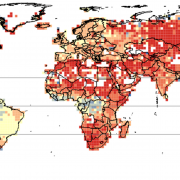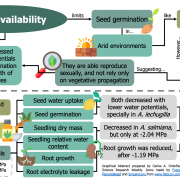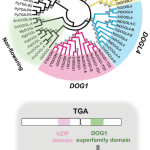Review: Fire-released seed dormancy – a global synthesis (Biol. Rev)
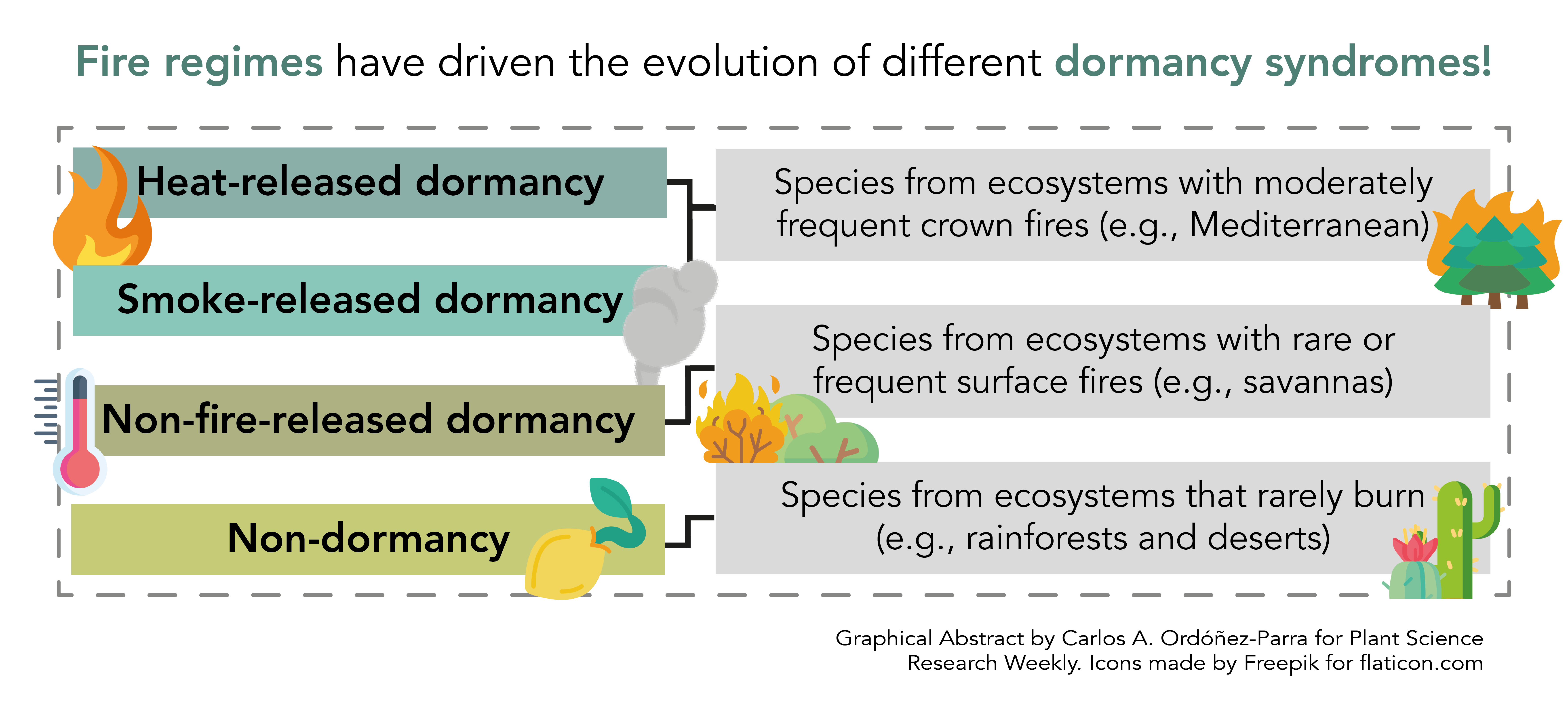 In 1991, Jon E. Keely wrote the first review about the role of fire as a dormancy-breaking cue in California’s Mediterranean ecosystems. In this review, almost 30 years after Keely’s work, Pausas and Lamont provide us with an updated and worldwide vision of the subject. Four dormancy syndromes and their potential evolutionary drivers are presented. Heat- and smoked-released dormancy are typical in ecosystems subject to frequent crown fires like Mediterranean ones. These dormancy syndromes have evolved several independent times during plant evolution, potentially during the Cretaceous, where fires were fairly common, and due to species migration from non-fireprone ecosystems to fireprone ones. In contrast, species from ecosystems where fires are rarer and superficial have developed dormancy systems that are not broken by fire but by other environmental factors, such as moisture and warmth. Finally, species from ecosystems where fires are extremely rare –such as rainforests– have many species with non-dormant seeds. While it highlights other environmental factors besides fire that might have driven the evolution of dormancy in fireprone ecosystems, this review highlights how fire and its regimes set the scene for it. Would you like to know more about this fiery topic? This detailed and compelling reading is an excellent place to start. (Summary by Carlos A. Ordóñez-Parra @caordonezparra) Biol. Rev. 10.1111/brv.12855
In 1991, Jon E. Keely wrote the first review about the role of fire as a dormancy-breaking cue in California’s Mediterranean ecosystems. In this review, almost 30 years after Keely’s work, Pausas and Lamont provide us with an updated and worldwide vision of the subject. Four dormancy syndromes and their potential evolutionary drivers are presented. Heat- and smoked-released dormancy are typical in ecosystems subject to frequent crown fires like Mediterranean ones. These dormancy syndromes have evolved several independent times during plant evolution, potentially during the Cretaceous, where fires were fairly common, and due to species migration from non-fireprone ecosystems to fireprone ones. In contrast, species from ecosystems where fires are rarer and superficial have developed dormancy systems that are not broken by fire but by other environmental factors, such as moisture and warmth. Finally, species from ecosystems where fires are extremely rare –such as rainforests– have many species with non-dormant seeds. While it highlights other environmental factors besides fire that might have driven the evolution of dormancy in fireprone ecosystems, this review highlights how fire and its regimes set the scene for it. Would you like to know more about this fiery topic? This detailed and compelling reading is an excellent place to start. (Summary by Carlos A. Ordóñez-Parra @caordonezparra) Biol. Rev. 10.1111/brv.12855



